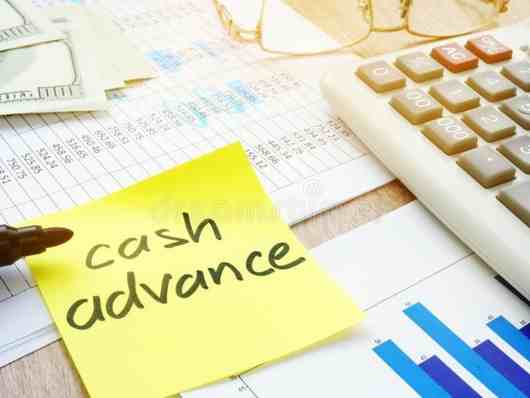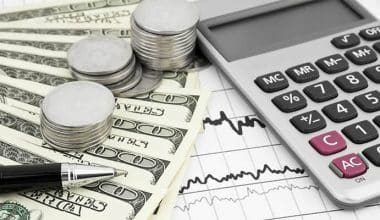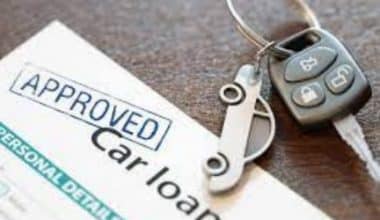Have you ever found yourself in a predicament where you had a sudden need for money? You can use a cash advance credit card to withdraw a particular amount of money that you will have to repay in the near future. It resembles a payday loan more. But first, you need to comprehend how a cash advance works as well as the fee and limit they impose.
What Is Cash Advance?
A cash advance is a short-term loan that a bank or alternative lender issues. A cash advance is also a service provided by many credit card companies that allow cardholders to withdraw a set amount of cash. Although cash advances typically have high-interest rates and costs, they are appealing to borrowers because of their swift approval and funding times.
A cash advance typically carries a high-interest rate. If this has an impact on your capacity to make timely monthly payments, that can also have an impact on your credit score. Also, your credit score may suffer if the cash advance pushes you beyond the card’s credit limit. Even after the sum is paid off, your credit report will still reflect the highest balance record, giving other potential creditors the impression that you once exceeded your credit limit. This could make it more difficult for you to obtain additional credit in the future.
How Does Cash Advance Works?
A cash advance is essentially a short-term loan that you obtain using the available credit on your credit card. You take out a cash loan against your credit limit as opposed to using your credit card to make a purchase of a good or service. Sadly, these two sorts of transactions are not handled equally by credit card providers.
When you use your credit card to make a purchase, the credit card issuer will bill you at the purchase interest rate that is specified in your contract. This rate is typically displayed as the purchase APR or annual percentage rate. If your card has a grace period, you won’t begin to accrue interest on that transaction until your payment is due.
That means you could never have to pay interest on your purchases as long as your card has a grace period and you pay your balance in whole and on time each month.
But, cash advances operate somewhat differently because they frequently don’t include grace periods. Your credit card issuer will likely charge you a processing fee along with a higher interest rate for cash advances than it does for regular transactions. Interest will begin to accrue on the advance amount as soon as you withdraw the money.
What Is Cash Advance Credit Card
You can use a cash advance credit card to get money in different ways.
#1. Payments made with an ATM
Your actual card and a personal identification number (PIN) given by your card issuer are required to obtain an ATM cash advance. Also, you can be charged fees and have daily ATM withdrawal limitations similar to those that apply to checking accounts.
#2. Payday loans with a convenience check
Convenience checks related to your card account may be offered to you by your credit card company. With convenience checks, you can make payments to a specific person or business that are charged to your credit account, just like you would with a regular check.
#3. Personal loan advances
You might be able to obtain cash advances in person at a bank using your card. Remember to bring identification with you, if you’re able to.
What Is Cash Advance Limit?
Cash Advance Limit refers to the highest amount that can be withheld in cash from your account, as set by us and updated from time to time and informed to you. It also refers to the fraction of your credit limit that is accessible for Cash Advance transactions.
The maximum credit limit on the credit card that the cardholder may use to conduct a cash advance transaction.
The maximum amount for cash advances is often a portion of the credit limit on your card. Your maximum cash advance, for instance, will be $4,500 if your credit limit is $15,000 and the card caps your cash advance limit at 30%.
What Is Cash Advance Fee
A cash advance fee is essentially a service cost assessed by your credit card company. It could be a set fee or a percentage of the cash advance sum, depending on your issuer. It might be deducted from your cash advance when you get it or added to your credit card statement.
Every time you seek a cash advance, your card issuer normally levies a fee, which is typically 3% or 5% of the entire amount. For instance, a $250 cash advance will run you $12.50 with a 5% fee.
Do Cash Advances Hurt Credit?
A cash advance is a brief personal loan secured by your credit card balance that you may use if you find yourself in a bind and require money right away. It has higher interest rates and additional expenses because it is so convenient.
Like any other loan, cash advances may have an influence on credit ratings. Although they don’t always lower your credit score, they can cause later credit problems. Your credit score may be lowered, for instance, if you use too much of your available credit or repay your cash loan late.
Although taking out a cash advance has no direct effects on your credit or credit score, it might have numerous indirect effects.
The credit usage ratio, a factor that credit scoring models use to determine your score, will increase if you accept the advance using a credit card because it will increase your outstanding balance.
For instance, if your card has a $1,500 limit your credit utilization ratio is 30% and you have $500 in debt. Yet, if you use that card to get a $300 cash advance, the balance will increase to $800 and your credit usage will go by more than 53%. When your ratio exceeds 40%, it might negatively affect your credit score as high utilization rates are a significant signal of credit risk.
Is Cash Advance a Good Thing?
Your credit score won’t have a negative impact directly on your credit card cash advance, but it will be negatively impacted indirectly by rising balances owed and credit utilization.
Rarely. They provide easy access to quick cash, but you will pay a big price due to their exorbitant fees and interest rates. There are more affordable options.
How Do I Pay Back a Cash Advance?
#1. As little as you can borrow
Borrowing only what you absolutely need is the best strategy for reducing the expense of cash advances. You’ll spend less in fees and interest the smaller your cash advance amount is. Never forget that a cash advance is just a bank loan. The best method to hasten the process is to avoid initially taking out a significant sum.
#2. Pay it off as you have money.
Start paying back the money you borrow as soon as you can because your advance starts to accrue interest the moment you receive your cash.
Aim to pay the $200 you took out in full—or as much as you can—in addition to your minimum payment.
Set a goal to pay back the money in days instead of weeks. Don’t even consider months. A $1,000 cash advance will earn interest at a rate of 25% APR, or around 70 cents per day. You can avoid the interest accruing too quickly if you pay it off within a few weeks. Because as time passes, interest will only grow.
How Much Is a Cash Advance for 1000?
According to the current average cash advance price, the cost for $1,000 would be $37.5. Nevertheless, it may possibly be higher, depending on the card. Some credit card issuers tack on a 3% fee, while others go as high as 5%.
Do You Have to Pay Back a Cash Advance?
There is a grace period for credit card transactions during which you have about a month to repay the money you borrowed without incurring interest. Nevertheless, there usually isn’t a grace period for cash advances, and interest will start to accrue the day you take your advance.
As soon as a credit card cash advance posts to your account, interest begins to accrue — and at a hefty rate. This means that you should pay back the cash advance as quickly as you can—in other words, as soon as you can—instead of waiting until your next credit card statement.
How Much Does cash Advance Let You Borrow?
Many credit cards provide a function known as a cash advance. The borrower may be eligible to obtain cash or a cash equivalent up to 20% or 30% of the card’s authorized credit limit, which is essentially a short-term loan. You may be able to withdraw up to 50% of your credit limit with some cards.
Why Should You Avoid Cash Advances?
You should avoid cash advances because of the following reasons:
#1. Nearly always, there is an upfront cash advance fee.
There is usually always an upfront cash advance fee when you use your credit card to get an advance (you can see the cash advance fees that various Canadian credit cards charge here). There is no method to get around cash advance fees (unless you acquire a low-interest rate card that doesn’t charge them, but there aren’t many of these), despite how frequently consumers ask this question. Depending on your credit card company, the convenience fee may be determined as a percentage of your transaction (often 1%) or as a fixed dollar amount (usually $2 or $3.50).
Remember that you will also be required to pay an ATM fee in addition to the cash advance fee if you withdraw money from an ATM that is not a part of the network of your bank or credit union.
#2. High Interest Rates
A cash advance is typically not regarded the same way as regular purchases, despite the misconception that it is. On top of the service fee, you’ll also be charged a higher interest rate. For two reasons, credit card companies frequently charge higher rates for cash advances than for purchases:
Many consumers are willing to pay more for the convenience of cash advances offered by credit cards. Using cash advances may indicate financial distress or pose a bigger risk to the credit card company.
If you normally pay 16% interest on your credit card purchases, you could pay up to 24% interest on your cash advance because the interest rate on cash advances can be as much as 5% to 8% higher.
How Long Do You Have to Pay Back a Cash Advance Loan?
As soon as you have borrowed the money, there is no going back. It indicates that interest will be imposed beginning on the day you remove a cash advance.
Can You Withdraw Money from a Cash Advance?
You can take a cash advance from your credit card with several different companies. You might be able to withdraw cash using your card at an ATM, depositing it in a bank account, or creating a convenience check, depending on the card.
What Happens if You Don’t Pay a Cash Advance Loan?
Your check is in the payday lender’s hands. On the due day for payment, it may be cashed. Your check will bounce if you don’t have enough money in your account. You will be assessed fees by both your bank and the payday lender.
Some payday lenders might make multiple attempts to cash the check. You will be charged an overdraft fee by the bank each time the check bounces.
Certain government benefits, such as SSI, are typically exempt from garnishment by debt collectors.
Cash advance loans are distinct. You provide the payday lender permission to take money out of your account, regardless of the sort of funds it contains, by writing a check on your account or allowing the payday lender to withdraw funds straight from the account.
The payday lender might eventually send your debt to collections. If the payday lender or collection agency sues you, you may end up owing not just the amount you borrowed but also the fee, overdraft fees, bounced check fees, potential collections fees, and potential court costs.
In Conclusion,
Although cash advance might prove to be an advantage considering the emergency but you have to avoid paying late. When you use the cash advance credit card for any transaction, pay if on time to avoid any harassment.
FAQs
How much interest is charged on a cash advance?
While credit cards typically have an interest rate of 16.22%, cash advances often have an interest rate of 24.80%.
What are 3 disadvantages of a cash advance?
It has very high interest and APR.
There is no grace period; interest on credit card cash advances starts to accrue immediately.
How cash advance interest is calculated?
- You can calculate it by dividing the interest rate on the cash advance by 365. (number of days in a year).
- After that, multiply it by the amount of the withdrawal.
- Then, multiply that result by the number of days between the transaction and the payment date (since cash advances start to accrue interest immediately)
Related Articles
- WHAT IS A FINANCE CHARGE? Overview, How it Works, and How to Calculate
- LOCAL FINANCE COMPANY: Top Best Local Finance Companies 2023
- CREDIT LINE LOAN: What It Is And When To Use It
- What Is Available Credit: Everything You Should Know
- What Is a Credit Limit? How Does Affect Credit Score






